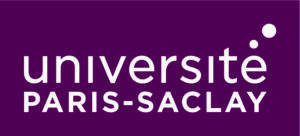Andrea Cattoni, strongly involved in the IPVF scientific program 3 on the development of low-cost III-V solar cells, has been interviewed at IPVF. Andrea is responsible for two of the four workpackages of the new program. Check the news on the IPVF website and the interview below to know more on the various research topics of our new scientific program!
Lowering the cost of III-V solar cells for a high-efficiency photovoltaic solution !
III-V semiconductor solar cells feature record efficiencies for single and multi-junction solar cells, but their manufacturing costs limit their use to space applications and concentrated photovoltaics.
The IPVF’s III-V program aims at reducing those costs, focusing on the fabrication of a tandem solar cell based on a low-cost III-V top cell over a silicon bottom cell with efficiencies exceeding 30%. Andrea Cattoni, CNRS researcher at the C2N lab, is a member of this program.
How did you enter the R&D PV field?
I hold a PhD in Physics from the Polytechnic of Milan. At that time, I was working on epitaxial growth for spintronics. During my post-doc at LPN-CNRS, I turned my interests to nanophotonics and nanofabrication. Together with Stéphane Collin, we started an activity on light trapping for ultra-thin solar cells, an activity that continues to have significant results, in particular, for III-V and CIGS solar cells. I was recruited in 2012 as a CNRS researcher with a project on III-V nanowire solar cells, originally for hot carrier solar cells. My project evolved toward a III-V nanowire on silicon tandem and today, is part of IPVF’s III program.
How do you work on this program? What are your goals?
The PV market is currently dominated by Si-wafer based solar cells. The record efficiencies are approaching the theoretical limits for silicon – about 29%. One option to overcome this limitation is to fabricate a tandem solar cell based on a silicon bottom cell and top cell based on a different technology. Top cells best candidates are based on Perovskites, III-V semiconductors, or chalcogenides. Which compound will be the winner is hard to predict, as each technology has its own strengths and weaknesses. Tandems on silicon using a III-V top solar cell exhibit the best performances and reliability. However, III-V compounds are expensive to fabricate and difficult to integrate on silicon. IPVF’s III program tackles these two problems: the cost of III-V compounds and their integration on silicon.
III-V compounds are normally grown by epitaxy on a III-V wafer substrate. Essentially, we are growing, atom by atom, a single crystal, the solar cell, on top of another crystal, the substrate. The two crystals do not need to be the same material, but they should have very similar lattice constants and thermal expansion coefficients, as their growth is carried out at high temperatures. Unfortunately, this is not the case for silicon and III-V compounds suitable for PV. While you can use certain tricks to grow a III-V solar cell on top of a silicon solar cell, the III-V solar cells present defects and low efficiency due to the different lattice constants.
What does work very well is to start by growing a III-V solar cell using a III-V substrate. You lift off the solar cell from the substrate and you bond it onto the silicon solar cell. Then, you start again using the same expensive III-V substrate. This strategy led to a state-of-the-art efficiency of 34.1%, demonstrated by the Fraunhofer ISE. The problem is that the lift-off process, the bonding, and the substrate reuse are not cost-effective or scalable.
The IPVF’s III program is structured into four different sub-projects. The goal of the first sub-project is to fabricate a high efficiency III-V solar cell that can operate as a top cell of a tandem on silicon and, at present, we are not far from the state of the art.
In the second sub-project, we address the problem of cost reduction. From one side, the idea is to develop a method to epitaxially grow III-V compounds at relatively low temperatures. This method could facilitate the direct growth of III-V thin films on silicon. The other target is to develop a method to facilitate the lift-off of the epitaxially grown III-V solar cell and allows for multiple reuses of the expensive III-V substrate.
I lead the two last sub-projects that deal with the problem of integration. We are developing an industrially scalable and low-cost method to bond the III-V top solar cell on the silicon bottom cell. This technology is compatible with a light trapping architecture that can increase the efficiency of tandem solar cell thanks to “photon recycling” and also reduce the thickness of both the top and the bottom solar cells.
The last sub-project is more explorational and consists of directly growing a III-V nanowire based top solar cell on silicon. In fact, contrary to thin film, high structural quality III-V nanowires can be directly grown on silicon. This is due to their small footprint that can accommodate the strain without creating defects. This is an elegant way to integrate III-V on Si and fabricate a tandem solar cell, all while avoiding the use of expensive III-V substrates, lift-off, and the bonding process. At present, this approach provides the lowest efficiencies. However, it is important to consider that while devices based on III-V thin film have been around for decades, devices based on nanowires are a relatively new technology. There are no fundamental reasons why nanowire solar cells could not attain the same efficiencies of III-V semiconductor thin films, and I am glad that the IPVF is willing to tackle this high risk / high gain research project.
Why did you get involved in this IPVF program?
The IPVF is based on an interesting model. It is an ecosystem composed of large and medium industrials, academics from a relatively small and prestigious university, and the largest national research center in the world. These actors often have different scientific interests, agendas, and timescales, yet have still managed to build a balanced and ambitious research project where everyone contributes and plays an important role. Some projects were clearly conceived to leverage the specific know-how developed by certain partners. In other projects, additional effort was required to take new directions. That being said, the program remains flexible and open to adapt to new opportunities with a high degree of reactivity. I am not aware of a similar institution elsewhere and I thank Daniel Lincot, who first saw an opportunity in this model for the IPVF.
Andrea CATTONI
CNRS researcher at the C2N lab



